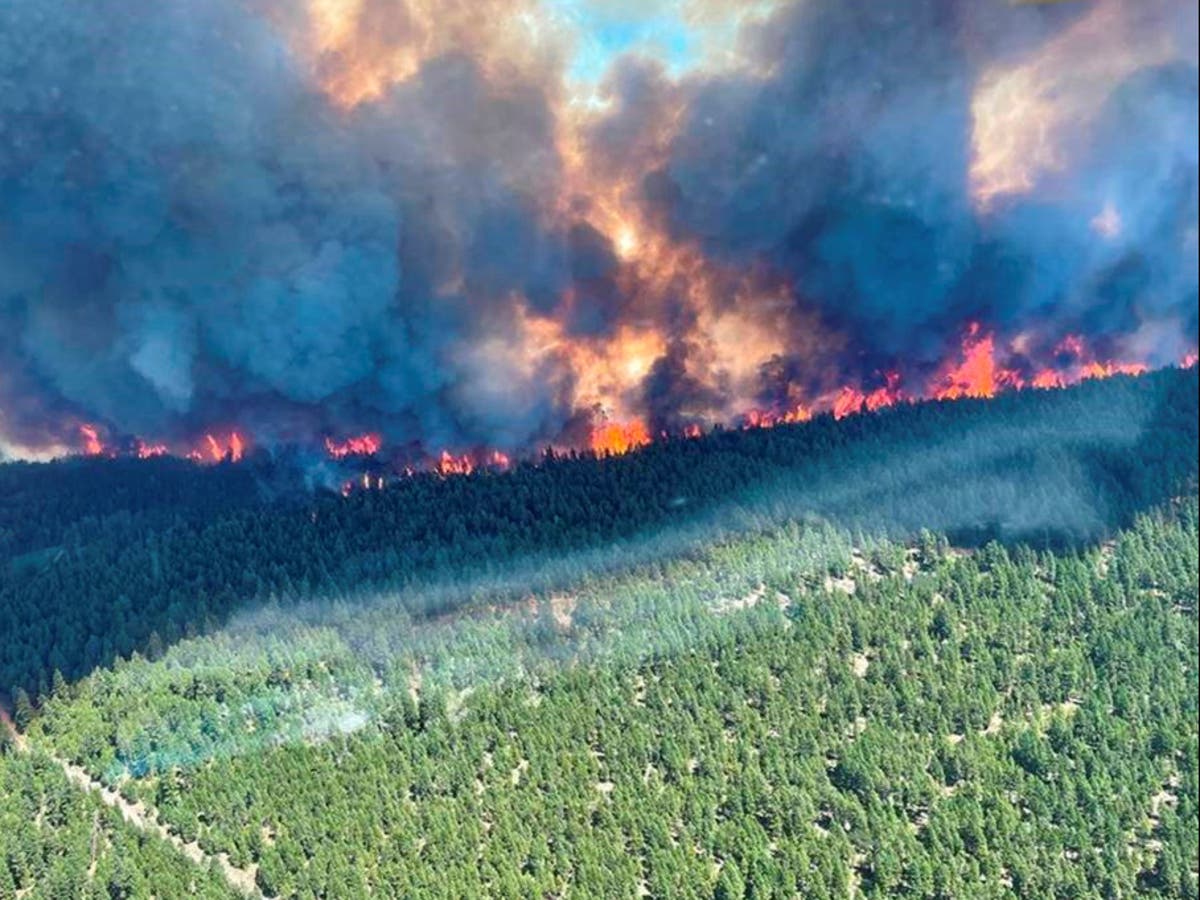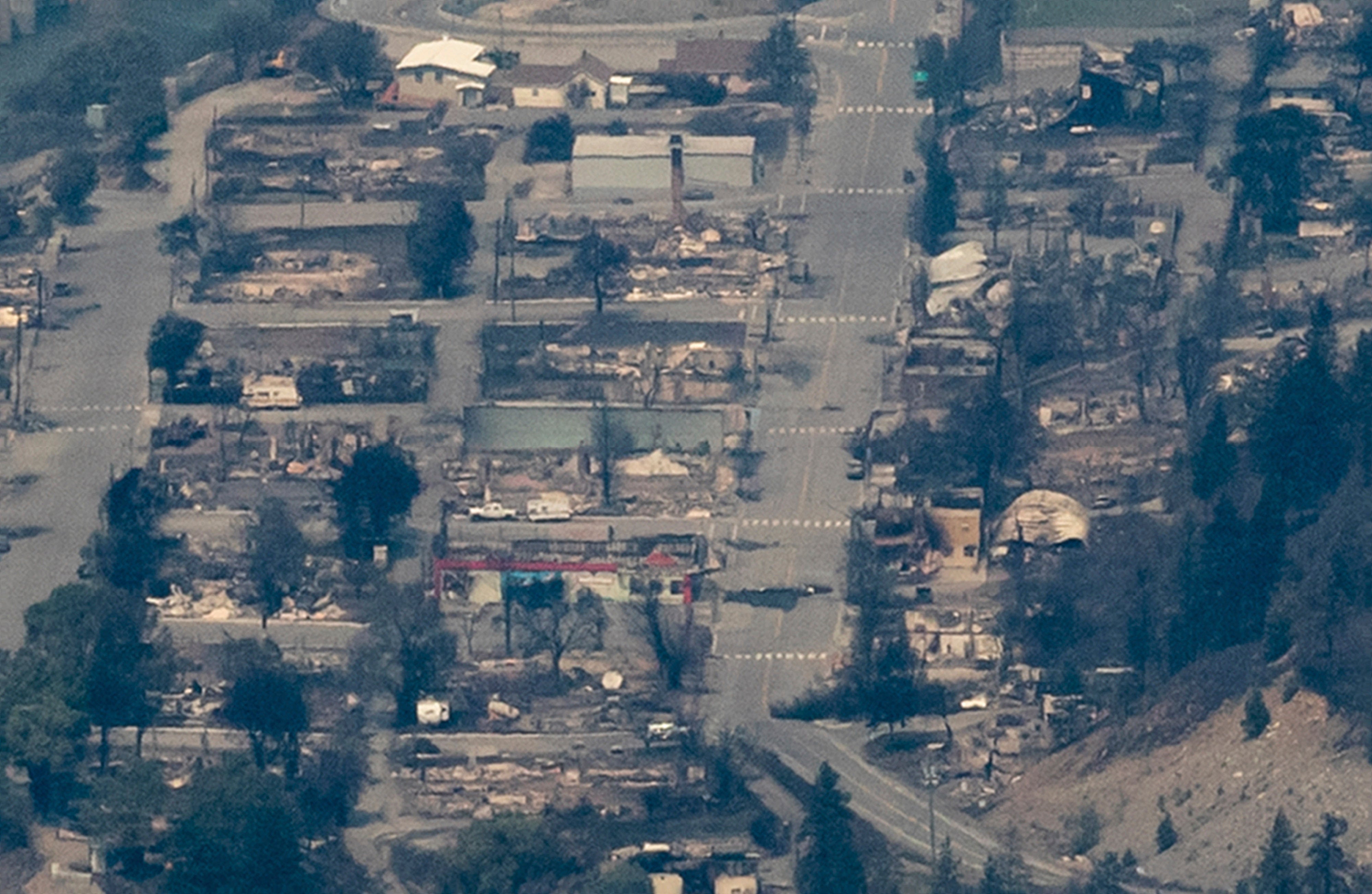Canada US heatwave: Aerial photos reveal wildfire ‘war zone’ as ‘heat dome’ kills hundreds
Follow live updates below
Your support helps us to tell the story
From reproductive rights to climate change to Big Tech, The Independent is on the ground when the story is developing. Whether it's investigating the financials of Elon Musk's pro-Trump PAC or producing our latest documentary, 'The A Word', which shines a light on the American women fighting for reproductive rights, we know how important it is to parse out the facts from the messaging.
At such a critical moment in US history, we need reporters on the ground. Your donation allows us to keep sending journalists to speak to both sides of the story.
The Independent is trusted by Americans across the entire political spectrum. And unlike many other quality news outlets, we choose not to lock Americans out of our reporting and analysis with paywalls. We believe quality journalism should be available to everyone, paid for by those who can afford it.
Your support makes all the difference.A town in British Columbia which experienced record-high temperatures earlier this week has been largely destroyed by wildfire, with at least two deaths reported.
Lytton endured highs of 49.6 C on Tuesday, the day before 1,000 residents from the area were forced to flee their homes because of the encroaching flames.
A couple in their 60s who took cover from the fire died after a power pole collapsed and fell onto them, according to the Vancouver Sun.
By Thursday afternoon, most homes and buildings in Lytton were ruined, said Mike Farnworth, British Columbia’s safety minister.
The British Columbia Wildfire Service reported that the Lytton wildfire was burning out of control over an area of approximately 30 square miles.
Referring to the damage wrought by the flames, John Haugen, acting chief of Lytton First Nation, said: “It was like a war zone last night.”
The wildfires were sparked by an unprecedented heatwave across western Canada and the US, which is believed to have killed hundreds of people in British Columbia and the American states of Oregon and Washington.
Higher-than-average temperatures to persist in July
Temperature records in parts of the US and Canada have been obliterated in recent days during the current heatwave.
But how long will the scorching heat persist?
The National Weather Service has predicted that temperatures will start falling, but they will remain “well-above average” in the North West and Upper Midwest into July.
The federal agency issued excessive heat-warnings for much of Washington and Oregon on Tuesday until 4 July.
There will also be extremely warm weather elsewhere too, with forecasters predicting that Shoshone, Idaho, for example, will experience 37.2C (99F) to 38.8C (102F) through 15 July.
Read more here:

When will the US and Canada heatwave end?
‘Well-above average temperatures will persist across the region into the Upper Midwest,’ the National Weather Service says
Photo: Lytton ‘90 per cent’ damaged by wildfire

Experts warn of more intense heatwaves due to climate crisis
There will be more intense heatwaves like the one being felt in the Pacific Northwest, experts have warned.
Climate change has probably doubled their likelihood, according to the Intergovernmental Panel on Climate Change (IPCC).
Isabelle Gerretsen takes a closer look at the link between climate change and heatwaves:

Is the climate crisis causing more heatwaves?
Heatwaves are now more intense, more likely and lasting longer
Mexico water supply affected by worsening drought, putting crops at risk
As the western US and Canada contend with a deadly heatwave, a long-term drought affecting two-thirds of Mexico looks set to worsen over the weeks ahead.
With forecasts warning of high temperatures on the horizon, experts have sounded the alarm that there could be water supply shortages and crop damage ahead.
Already, in some states, Rafael Sanchez Bravo, a water expert at Chapingo Autonomous University told The Associated Press, “irrigation is practically disappearing due to lack of precipitation”.
While rains were just 3 per cent below average across Mexico last year, a strain on water reserves made worse by a surge in domestic demand during the Covid-19 pandemic has prompted concerns.
The need to replenish the country’s reservoirs is dependent on the rainy season, known as the North American Monsoon, which is currently unfolding.
“The next three months will be really crucial in how this drought turns out,” Andreas Prein, an atmospheric scientist for the National Center for Atmospheric Research in Boulder, Colorado, told AP.
Water shortages are common in some parts of Mexico, but extreme heat has exacerbated the the situation, with experts attributing the phenomenon to climate change.





Join our commenting forum
Join thought-provoking conversations, follow other Independent readers and see their replies
Comments